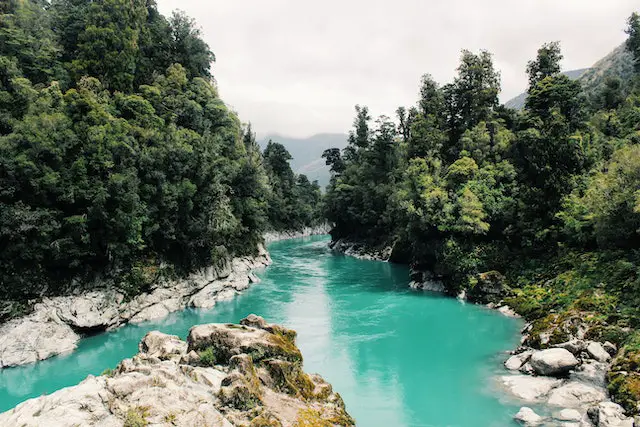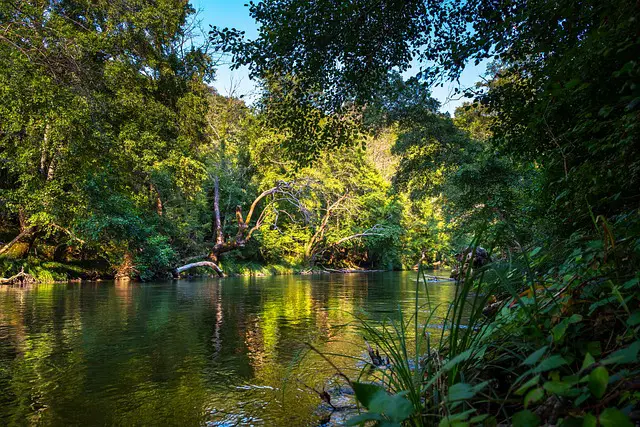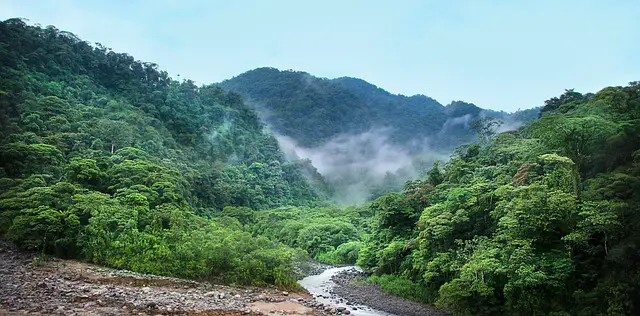Temperate rainforests have milder climates and distinct seasons, while tropical rainforests are hot and humid year-round with high biodiversity.
Temperate Rainforest Vs. Tropical Rainforests
Temperate rainforests are found in cooler regions with moderate temperatures throughout the year. They are characterized by towering evergreen trees, lush undergrowth, and abundant rainfall. These forests provide a habitat for diverse flora and fauna, including iconic species like bears and salmon.
Tropical rainforests thrive in warm climates near the equator. They are known for their incredible biodiversity and dense canopies filled with vibrant vegetation. These forests house an array of exotic animals such as monkeys, jaguars, toucans, and colorful insects.
What is a temperate rainforest?

A temperate rainforest is a unique biome characterized by lush vegetation, high annual rainfall, and moderate temperatures.
Unlike tropical rainforests, temperate rainforests are found in regions with cooler climates, typically at higher latitudes or altitudes. They feature diverse plant life, including towering evergreen trees, mosses, and ferns.
Prominent temperate rainforests are located in the Pacific Northwest of North America and parts of New Zealand and Chile.
These ecosystems are critical for biodiversity, playing host to various wildlife species, and they help regulate the global climate by sequestering carbon dioxide, making them essential for the planet’s health and ecological balance.
What is a tropical rainforest?

A tropical rainforest is a lush, biodiverse biome characterized by its warm and humid climate, with minimal temperature fluctuations throughout the year.
Found near the equator in regions of Central and South America, Africa, Asia, and Oceania, tropical rainforests host a wide array of plant and animal species.
They feature towering trees, dense undergrowth, and receive heavy, consistent rainfall. These ecosystems are vital to global biodiversity, containing countless unique species, and they play a crucial role in regulating the Earth’s climate by absorbing and storing large amounts of carbon dioxide, making them an essential component of the planet’s ecological balance.
Temperate Rainforest Vs. Tropical Rainforests – Key differences
| Characteristic | Temperate Rainforests | Tropical Rainforests |
|---|---|---|
| Geographic Location | Found at higher latitudes or altitudes, often near coastlines in regions like the Pacific Northwest, New Zealand, and Chile | Typically found near the equator in regions of Central and South America, Africa, Asia, and Oceania |
| Climate | Moderate, with distinct seasons and milder temperatures | Hot and humid year-round, minimal temperature fluctuations |
| Precipitation | Receive high annual rainfall, often with wet and dry seasons | Consistent heavy rainfall throughout the year |
| Flora | Dominated by evergreen trees like conifers and broadleaf species | Diverse array of broadleaf trees, vines, and palms |
| Fauna | Home to a variety of wildlife, including bears, eagles, and salmon | Extremely high biodiversity, hosting unique and colorful species like jaguars, toucans, and frogs |
| Canopy Structure | Canopy is less dense and not as continuous | Dense, multi-layered canopy with minimal understory light |
| Temperature Range | Experience seasonal temperature variations | Stable, warm temperatures year-round |
| Human Impact | Historically subject to logging and development | Facing significant deforestation and habitat loss due to agriculture and logging |
| Global Importance | Important for biodiversity and carbon storage | Critical for biodiversity, carbon storage, and regulating the Earth's climate |
| Notable Examples | Pacific Northwest of North America, New Zealand, and Chile | Amazon Rainforest in South America, Congo Rainforest in Africa, and Southeast Asian rainforests |
Temperate Rainforest Vs. Tropical Rainforests- Climate and Location Differences
The climate and location differences between temperate rainforests and tropical rainforests are significant and play a pivotal role in shaping these distinct ecosystems:
Temperate Rainforests:
Climate
- Temperate rainforests have a moderate climate characterized by distinct seasons, with both warm summers and cool winters.
They receive a high annual rainfall, often with a wet season during the winter months and a drier season during the summer.
Location
- Found at higher latitudes or altitudes, often near coastlines in regions like the Pacific Northwest of North America, New Zealand, Tasmania, and parts of Chile.
Examples include the coastal rainforests of Oregon and Washington in the United States and the cool-temperate rainforests of southern Chile.
Tropical Rainforests
Climate
- Tropical rainforests have a hot and humid climate year-round. They experience minimal temperature fluctuations, with consistently high temperatures.
These rainforests receive heavy, consistent rainfall throughout the year, often exceeding 80 inches (2,000 mm) annually.
Location
- Typically found near the equator in regions of Central and South America (e.g., the Amazon Rainforest), Africa (e.g., Congo Rainforest), Southeast Asia (e.g., Indonesian archipelago), and Oceania (e.g., Papua New Guinea).
These rainforests are located within the tropics, primarily between the Tropics of Cancer and Capricorn, creating a belt of continuous warmth and high humidity.
These climate and location differences are fundamental in defining the characteristics and biodiversity of temperate and tropical rainforests. They result in variations in plant and animal species, ecosystem structure, and the overall environmental conditions experienced within these distinct biomes.
Image Credits
Featured Image By – Greg Montani from Pixabay
Image 1 By – Photo by Dom Gould
Image 2 By – Antonios Ntoumas from Pixabay









